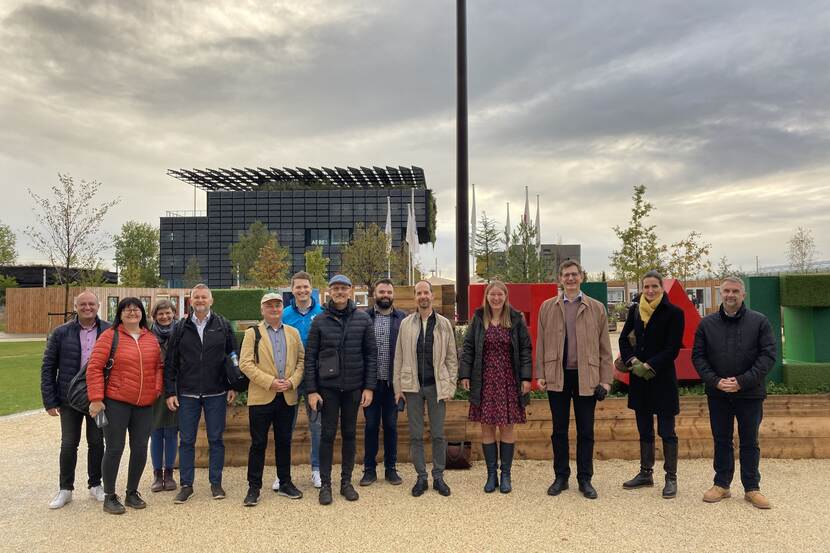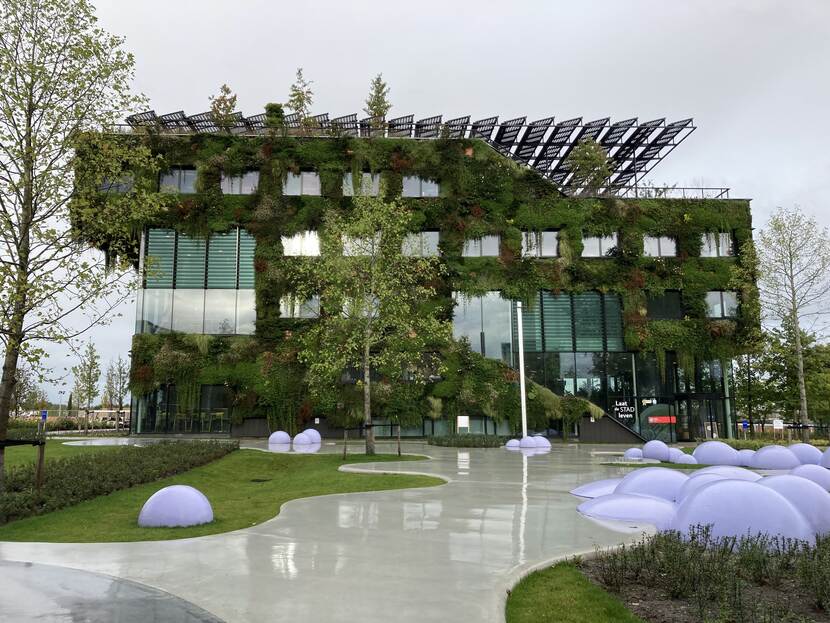A Hungarian delegation visited green cities and the Floriade Expo in the Netherlands
Urban greening is a shared dream of Hungarian and Dutch city planners in the 21st century. In a recent study trip organized by the Dutch Embassy in Budapest, they could share their experience and exchange ideas.

The green city trend in Hungary is mostly driven by grassroot actions, innovating professionals, and municipalities. These experts and organizations aim to reconnect urban areas with the ecosystem, to create more livable and sustainable living spaces through the integrated development of green areas.
Hungary is represented in the Green Cities Europe platform by the Hungarian Ornamental Horticulturist Association. Their programs connect with each other municipal decision-makers, real estate developers, investors, professional experts and the general public and disseminate information on the benefits greening has to offer to society, public health and the economy.
In the past years, multiple city greening projects were launched in Hungary, including bee pastures and grazing areas in Budapest and the Project Pollinator in Szeged - As well as other projects in cities throughout the country.

This vision of urban greening that Hungarian and Dutch cities share was the reason why the Embassy of the Netherlands in Hungary organized a 3-day study trip from Hungary to the Netherlands between September 26-28.
Experts from eleven Hungarian cities participated in the trip where they could share and exchange ideas with their Dutch counterparts in the field of green development.
The group visited FLORIADE EXPO 2022. Here they saw presentations about the efforts the Netherlands has been taking to increase sustainability in urban areas with a special focus on greening, the application of new biomaterials and better water retention.
The group also toured the newly established arboretum with 3000 plants at the exhibition site which will remain after the end of the expo to make a contribution to the green city of Almere.
The delegates visited the Natural Pavilion, an inspiring example of how society can live and work nature-inclusively since the building is constructed almost entirely of natural (organic-based) materials and is a literal accumulation of innovations.
At the Aeres Hogeschool building the participants could observe Dutch solutions on how indoors and outdoors greening work together. The building is also a testament to how design and construction can follow the greening concept and the close cooperation between architects and landscape experts.
Besides the Floriade Expo, the group also visited the site of urban revitalization projects in the city of Tilburg. The city center, Koningswei and the Piushaven waterside blue development area. Piushaven is close to the city center, and has access to the former harbor. This area is expected to soon become a vibrant multifunctional quarter.
The study tour ended in Eindhoven, where the experts visited Strijp-S. This 27-hectare industrial area with manufacturing and office buildings previously belonged to the company Philips. It has been restored and repurposed into a vibrant residential quarter, combining old and new designs. It is also the location of the famous green Trudo tower.